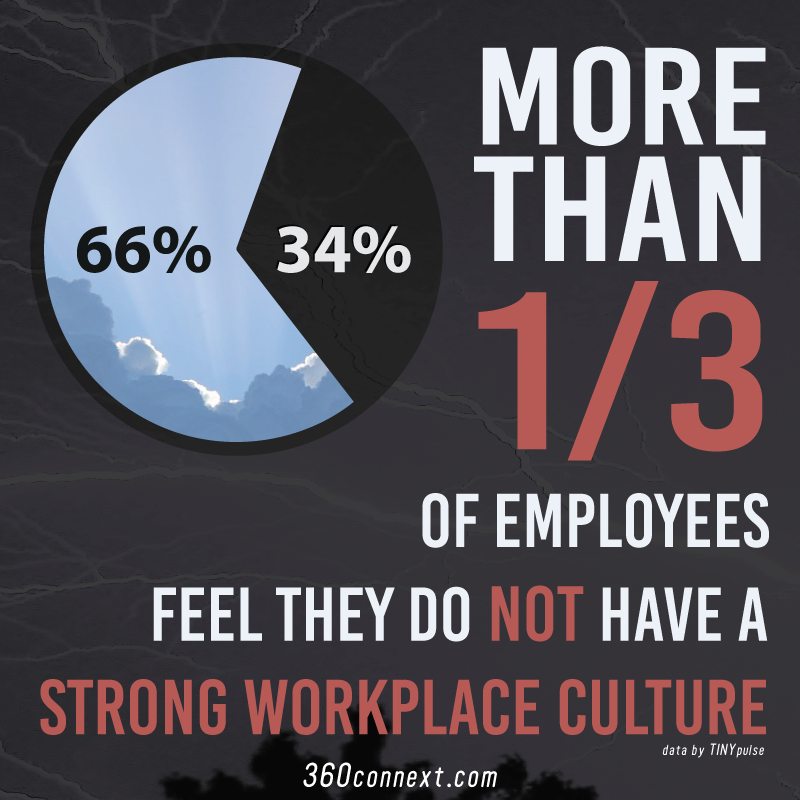(A Best of 360Connext post)
Ever walk in on a couple who is in the middle of a fight? It’s human to want to back away slowly, hoping they don’t see you. It’s awkward and uncomfortable. We don’t like it.
Organizational culture can reveal itself to customers in the same awkward and uncomfortable way. If your culture is toxic, that toxicity permeates through to every interaction a customer may have. If your culture is toxic, that toxicity permeates through to every interaction a customer may have.


Nobody likes to work in a place like this. That’s why it’s crucial to be an enlightened leader and assess the situation realistically. Here are a few ideas for how to address a toxic workplace culture, or even help prevent the disease from spreading!
Share it openly. Keep asking and share both the raw feedback AND what’s being done about it. Show your teams that they are heard and action is being taken, even if the action is “we can’t do that because…”
If the C-Suite is the only group getting recognition or sharing ideas, it’s easy to feel unheard and unimportant. Ask your superstars to share what they are hearing from customers. Invite your customer service reps to a commercial shoot. Help those who work very hard each day feel like they are part of the bigger team.
Don’t hide behind press releases or edited newsletters. Derrick Hall, CEO of the Arizona Diamondbacks, hosts a monthly chat with employees and fans. Anything goes! Recently, they stared sharing this chat on Periscope so more people could be included.
It doesn’t have to be formal every time. If your next customer advisory board session or focus group isn’t scheduled for months and you feel out of touch, invite a few customers in to see what’s next or try out a new idea. Staying close to customers is a key part of success.
In any extraordinary culture, you see this pattern repeated again and again. Zappos is known for having in-office parades. Rackspace rewards great customer service reps with a straight jacket to recognize their fanatical customer support. Find ways to celebrate. Catch your people doing right!
They kill ideas and innovation. They prevent people from doing their best. They protect bad leadership. Take a look around. How toxic is your culture? Is it slipping? Start the toxic cleanup today.
 Jeannie is an award-winning customer experience expert, international keynote speaker, and sought-after business coach who is trailblazing the movement from “Reactive Customer Service” to “Proactive Customer and Employee Experience.” More than 500,000 people have learned from her CX courses on LinkedIn Learning, and her insights have been featured in Forbes, The Chicago Tribune, The Wall Street Journal and NPR.
Get Jeannie’s insights in your inbox each week by subscribing to The Weekly Win and follow her on LinkedIn, Instagram and YouTube.
Jeannie is an award-winning customer experience expert, international keynote speaker, and sought-after business coach who is trailblazing the movement from “Reactive Customer Service” to “Proactive Customer and Employee Experience.” More than 500,000 people have learned from her CX courses on LinkedIn Learning, and her insights have been featured in Forbes, The Chicago Tribune, The Wall Street Journal and NPR.
Get Jeannie’s insights in your inbox each week by subscribing to The Weekly Win and follow her on LinkedIn, Instagram and YouTube.